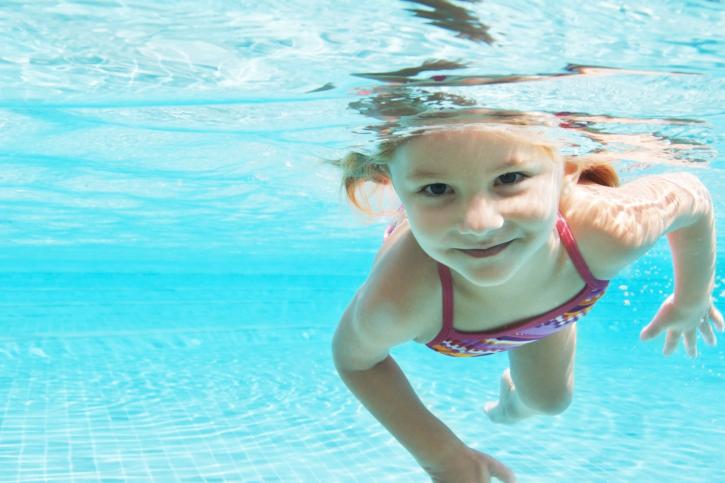Note: This post was written by Kaleigh Briggs, a senior medical student at Royal College of Surgeons Ireland, class of 2015.
Drowning is the second leading cause of death in children under four, and home pools are where these children are most likely to drown. We’ve discussed the concept of ‘acceptable risks’ in a previous blog post, and that idea is as relevant as ever when considering children swimming in a home pool. Keep in mind that it is impossible to create a truly safe pool; we can never eliminate all risks. We can, however, take sensible measures to lower the risk to an acceptable level. These safety tips below can help.
SAFETY TIPS
FENCES FIRST → Kids are drawn to water, especially on hot days or when pool toys are floating in the water. Ensure you have a proper fence around the pool with a self-closing latch that is beyond childrens’ reach. Additionally, a safety cover can be kept over the pool when it’s not in use.
SUPERVISION IS KEY → The importance of adult supervision cannot be overstated. 80% of pool deaths occur when no one is watching. Being around the pool is not enough. Distracted adults might assume someone else is watching. Its important to make sure everyone knows who is responsible for watching the kids. Additionally, very young children should be kept within arm’s reach. With big groups of kids in the pool, take a tip from some summer camps and institute a “buddy policy.” Every 15 minutes or so a whistle is blown or an adult yells, “Buddies!” Each child finds their designated budy and raises held-hands. The supervisor counts the twosomes to ensure all the children are accounted for, and the kids let someone know if they can’t find their buddy. This policy is good for peace of mind to make sure everyone is accounted for, but isn’t a replacement for supervision in between calls.
LIFEJACKETS & PFDs → Children under 3 years should wear a Canadian approved lifejacket or personal flotation device (PFD), and should be kept within arm’s reach of an adult at all times. For older children, swimming aids or flotation devices should match ability. Having a floating toy like a pool noodle, or even having a lifejacket floating in the pool or nearby, can help if any swimmers get tired in the deep-end.
KIDS’ COURSES → Teach your children about water safety and sign them up for swimming lessons. The Canadian Red Cross teaches swimming lessons to children as young as four months with parents, and unparented lessons start at three years.
ADULTS’ COURSES → Why let the kids get all the education? Parents are recommended to take courses on pool safety, first aid, and lifesaving skills (such as CPR)
EMERGENCY EQUIPMENT → An emergency is not the time to find out your first aid kit is empty. Keep your first aid kit and any lifesaving equipment near the water. Click here for what to include in a basic first aid kid
3 POOL RULES → Different rules will fit with different families, but we recommend including these three simple rules for kids to know and follow. Remind children before swimming what the rules are, and make sure they know what the outcome will be if rules are broken. Maintaining consistency is important when trying to build positive habits. Additionally, everyone should know why each rule is important. Here’s an example:
- No swimming without an adult → Parents should know that >80% of drownings occur when the individual is alone; Kids should know that drowning doesn’t take long, and in case of emergency, an adult needs to be within eyesight of the swimmers.
- No running inside the gated pool area → Parents should know that slip-and-falls are associated with drownings and pool injuries. The often-quoted statistics regarding kids drowning in as little as 1 inch of water are usually associated with head injuries as a result of such accidents; Kids should know that the area around the pool is slippery, and running can increase the chances of them falling and hurting themselves.
- No screaming at the pool unless there is an emergency → Everyone should know that while the occasional shriek of laughter from a cannonball splash is inevitable, if there is constant screaming from the pool, no one will be alerted when there is an actual emergency.
Arm yourself with these tips and rules, and dive in to the second half of summer!
— Kaleigh Briggs
